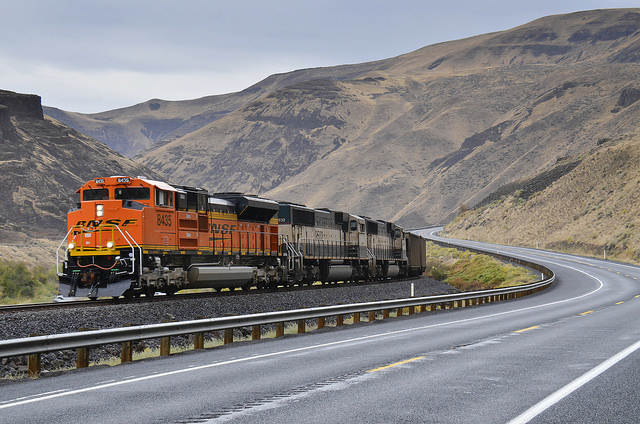
The Senate’s multi-year transportation bill misses the mark on multimodal freight

Below is an in-depth explanation of one of the 10 things you need to know about the Senate’s DRIVE Act.
The Senate’s multi-year transportation bill recognizes that efficient freight movement is important, but the bill prioritizes freight moving on highways over that moving by rail, air, ports and pipelines.
The DRIVE Act (HR 22) is unique from past transportation bills in that it creates a program for freight. The bill includes almost $1 billion for freight in its first year and up to $2.5 billion toward the end of the authorization in 2021. (The bill was more robust when originally introduced in the Senate Environment and Public Works Committee, providing $2 billion in the first year and rising to $2.5 billion. It was scaled back to a smaller cost when some of the DRIVE Act’s “pay-fors” were deemed too controversial).
The program features a comprehensive and thoughtful national- and state-level planning framework to analyze the condition and performance of the national freight transportation system. It would require states to identify priority projects for improving freight movement regardless of mode – including rail, seaports, pipelines and airports. Yet the program restricts the majority of funds to highway projects. Only 10 percent of the money it provides to states can go to other modes.
This funding model would fall far short of the costs of multimodal freight projects. California, for example, would be allocated $90 million under this program in 2016, only $9 million of which could be used for non-highway projects. The Port of Los Angeles’s West Basin Railyard project – a rail and port project – costs $137.7 million.
Similarly, Illinois would have less than $4 million available. Chicago’s CREATE program – one of the most significant freight projects in the nation, which would improve rail freight efficiency throughout much of the country – costs over $3 billion.
This restriction seems burdensome, particularly since the new program would be paid for out of the general fund, not by roadway users. Congress has taken funding from across the board and restricted it to highway projects, even if a state says that its priorities for freight are elsewhere.
Also troubling is the fact that the National Freight Program’s funding would be distributed among the states evenly, using a formula that ignores where freight volumes are highest or where goods get stuck in congestion or bottlenecks. It’s the equivalent of investing wildfire prevention dollars in all 50 states even though a majority of fires are in the dry, arid west.
Reducing the country’s freight bottlenecks and helping businesses efficiently move commerce is a worthwhile goal, and one that can only be achieved with a truly multimodal freight program. When the House takes up their transportation bill in the early fall, we hope they rethink the DRIVE Act’s distribution formula and the restrictive funding cap on non-highway projects to ensure this program lives up the goals outlined for the National Freight Program.



